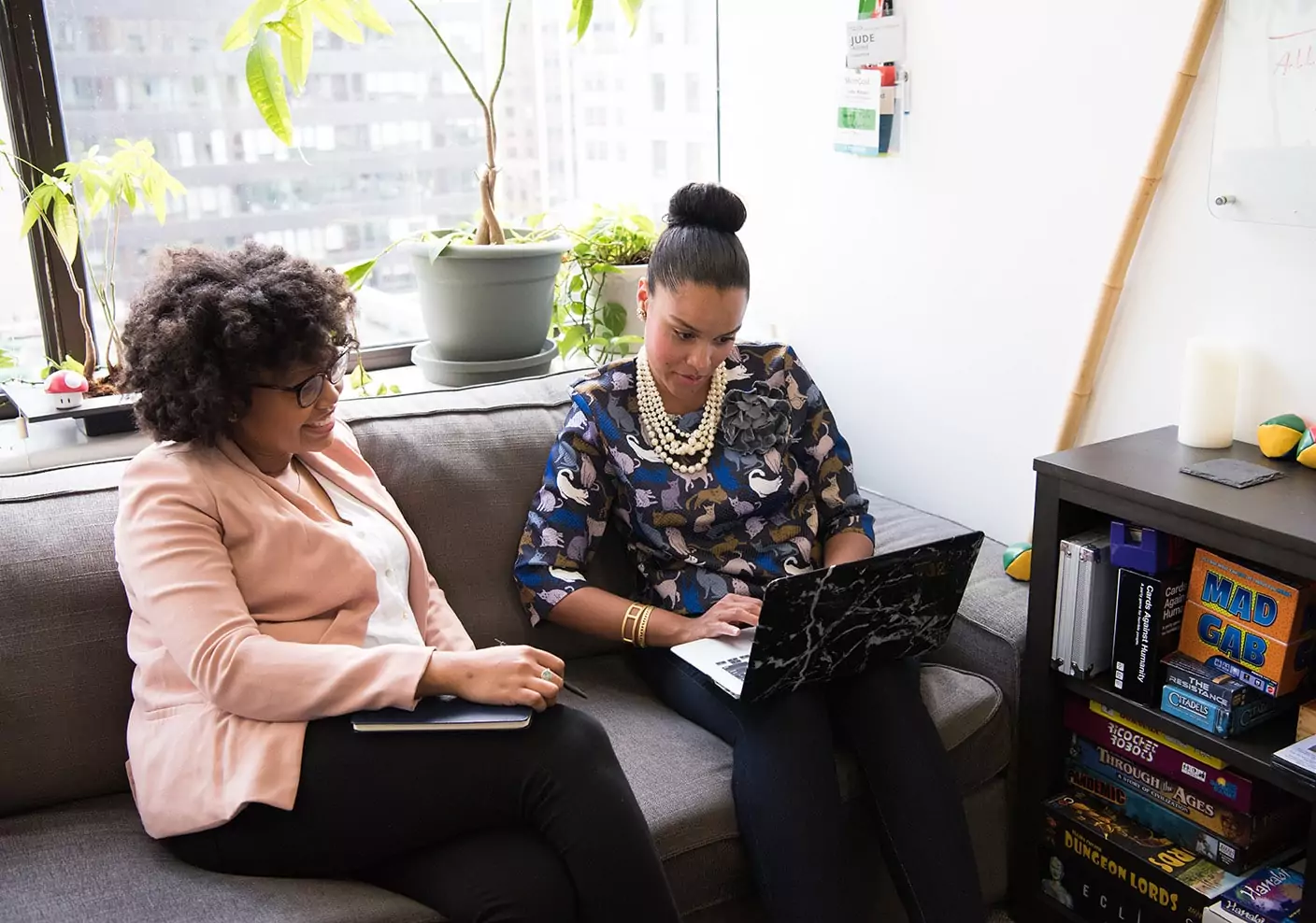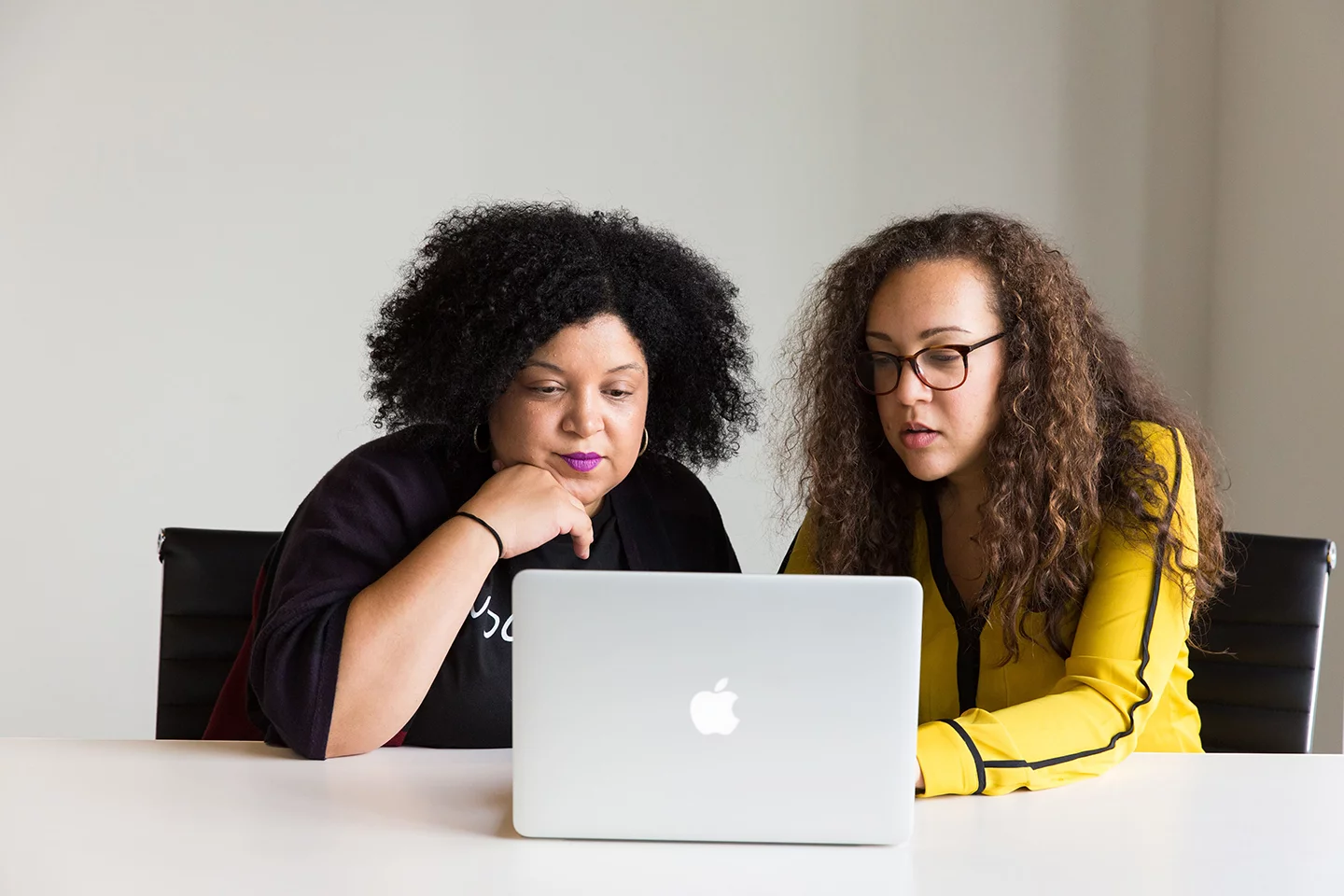We recently continued our weekly Future of Work Virtual Roundtable Series with “Virtual Simulations to Reinforce Coaching with Empathy,” a session featuring Debra Glaser, a behavioral scientist, researcher, and learning experience designer with Google.
Below is an excerpt of Dr. Glaser’s presentation with some key takeaways about how empathy can be practiced and learned like any other skill. To view the full recording, including a Mursion VR simulation, visit our YouTube channel.
“If you think about it, at the end of the day, all of us humans just want to be heard and understood. We want to know that our leader or our manager, our company gets our challenges and our concerns and that they care about us as a person, not just as an employee. This is key to creating research time and time again that teams are more productive when they have high trust and they believe that their leaders care. Empathy is how you show your employees that care about them.
We all want to be happy at work, right? Empathy increases happiness at work, and why? When you look at happiness, it’s correlated with retention. Happiness isn’t a little thing. It’s really important you want your employees to be happy so that they stay. Now, the way to do this is to help them feel appreciated and valued.
When someone feels appreciated and valued, then they’re able to find purpose and they’re able to find satisfaction at work. There was a study recently that found that 66 percent of employees said that they would leave their job if they felt unappreciated. This number is even higher for Millennials and workers from younger generations. Empathy is how you show them that you value their contribution.
One of my favorite things do is to blend behavioral science with technology.
There’s also brain science, neuroscience that backs this up. There are neurochemical drivers of happiness. We have dopamine, we have serotonin and we have oxytocin. They make up happiness and are often called the Happiness Trifecta. Any activity that increases the production of these neurochemicals can cause a boost in mood and empathy does this; empathetic leadership boost serotonin and oxytocin.
As a result, it helps employees feel a stronger bond to their team. That is reassuring and it helps people feel that their contributions are valued. Companies require collaborative input. You don’t just succeed or fail based on the efforts of one person. Google found that the most successful teams demonstrate empathy by having team members who are willing to discuss their emotions.
How they feel about certain things that happened, that they’re able to utilize nonverbal cues and recognize them. It also gives each group member equal time to contribute ideas, and then you have better collaboration and better innovation.
The Empathy Equation
If you walk away with one takeaway from today, I want you to know that it is possible to improve empathy. That it is a skill that you can create opportunities to practice and get feedback, and Mursion is one of those opportunities. Empathy will also put you in a stronger position to drive impact and influence when you can truly understand the needs and perspectives of others.
If you walk away with one takeaway from today, I want you to know that it is possible to improve empathy.
If we dive into empathy, there’s three types. There’s cognitive empathy, there’s emotional empathy, and there’s empathic concern. Cognitive empathy is about thinking, it’s ‘I understand how you think about things, I’m taking the other person’s perspective.’ But there’s a downside to cognitive empathy because people can manipulate you and it can get in your head about a certain topic.
Emotional empathy is ‘I feel with you, I can feel your sadness, I can feel your happiness.’ This is critical for leadership because it helps you create rapport on a team. But there’s a downside to this one, too, if you absorb and you’re exposed to the pain of others, it can lead to burnout if you don’t have proper self-care and emotional self-management, so a lot of healthcare professionals have to be cautious of emotional empathy.
The last one is empathic concern. This is also sometimes called compassion. This is you see and you understand someone else’s pain and challenges and you spontaneously want to help them. That’s where the compassion comes out. Individuals who have empathic concern are really good team players, they’re fantastic managers. The funny thing about empathy and these different types of empathy is that it is possible to demonstrate one or more of these, yet still come across this uncaring. Effective leaders have all three, especially empathic concern.
There’s More Than One Type of Empathy
Cognitive empathy is thinking. Cognitive empathy is, ‘I get it, I get how you’re thinking about this, I get how you feel about this. I can see your point of view on this.’ We’re going to blend this idea of coaching with empathy, what does it look like? Coaching is collaborative, it’s a partnership where you need empathy, because what you want to do is work with someone to be able to accurately communicate that you understand them, that you get their perspective, that you get their experiences.
In coaching, in a coaching conversation, the way that you see empathy is through powerful reflection. You need to be able to listen deeply, to understand someone experiences and how they feel. But you need to be able to reflect back not always as a question but to acknowledge how someone feels.
Pretend you’re having a conversation with a manager or someone else who’s important to you and you share a moment of challenge. You tell someone how you feel, you tell someone that you’re really struggling with something. What if in that moment, your manager just responds with a question back? How would you feel in that moment? Yes, not heard, unheard.
A manager could be in that moment, or someone else could be thinking about and really understanding your perspective having that empathy. So yes, it could depend on the question being asked, but often you need some sort of acknowledgment. If you could acknowledge with asking the question, maybe that could work. If you kept on going to someone and they kept on asking you these questions without acknowledging, how might it impact you? How might it impact your work?
Yes, it would suffer. You’d feel less motivated, not feeling heard, undervalued. There’s another downside of this, too. I hail from an educational background, as well. John Dewey, a psychologist and philosopher who was critical in education reform, an education reformer, he felt that education, that reflections are critical to personal learning.
He said, ‘We do not learn from experience, we learn from reflecting on our experience.’ There’s reflections that we do. What happens is that you want to evoke insight, you want to help someone reflect on something on a perspective that they didn’t see. Often, if you reflect back for them, sometimes it can help them see what’s missing.
Six Steps to Achieving More Empathic Interactions
If you are a manager, or you’re any human who wants to engage in some sort of coaching and you want to shine with empathy, these are six things that you can focus on that will help this process. The first one is to create mental space. This is get present, take a deep breath, take a pause, reset. We could do something together really quickly, which is, take a deep breath in, exhale out and imagine taking everything that you’re concerned about in the moment that’s weighing you down, and just putting it to the side. Then take another breath in and a breath out. Open your eyes to a clearer space. That’s something simple that I do if I’m running in through all these different situations.
The second is actively listening. This is challenging, because we all always say listen deeply. But one thing that I like to think of is wait. Why am I talking? Pause, and also notice, if you just let someone talk and then you can give some space to then hear them and realize that it’s about them. They’re sharing right now and it’s not about you having to ask your question, and this one is hard. I’m a major talker. This, for some people, will never get easier.
The next one is get curious. This involves you can ask questions for understanding in a conversation. This just isn’t with coaching. A really big one for me is to assume positive intent. All those questions I was asking from the beginning. If we assume positive intent, often, all of that goes away. What this means is if someone does something that wrong with you, or if someone does something that you don’t agree with, if you get into a habit of defaulting to they’re doing the best they can, or maybe that wasn’t their intent in this, let me then get curious about it, it often helps prevent a lot of miscommunications. Yes, there probably are some people who weren’t doing something right, but the majority of people are trying to do the right thing.
Five, this is a big one, positive psychology. Focus on strengths and behaviors, not on personality. This is a big one for feedback too. If you get feedback that says you use these strengths really well, it would drive more impact if you use these strengths more. People feel empowered, and they understand that, but if you say you ramble a lot of meetings, or really it’s focusing is very hard for you, that doesn’t help someone reflect and it doesn’t help someone improve. That doesn’t mean that they can’t be successful.
The last one is a growth mindset, this one’s really interesting to me. Carol Dweck did research, and she asked people about empathy, she said is it a trait or is it a skill? The individuals who believed that it was a trait believed that they couldn’t fix it so they couldn’t get better at empathy.
Is empathy a trait or is it a skill?
You can’t get better unless you believe that you can. The next slide is a quote from an awesome up and coming researcher in empathy. He wrote a book called The War for Kindness by Jamil Zaki. He says empathy is something like a muscle; if it’s left unused it atrophies, if it’s put to work it grows. He coined this term ’empathy gym,’ and I think it’s really great that you can put yourself in different situations to help grow your empathy.
Cultivating Kindness and Empathy
Here are some of the things that science shows that with the right type of practice, empathy can really be cultivated in a sustainable way.
Loving-kindness meditation. There’s science behind this. There were researchers in Germany who had people do training where they did loving-kindness meditation before and after, and they actually took scans of people’s brains before and after the empathy. We talked about the brain scans and then we just missed cultivating diverse friendships. Meeting people from all different walks of life, getting to know them and understand their point of view, their perspectives, what their life is like, even talking to strangers every once in a while and understanding what life is like for them.
The next one is reading, listening, watching. I put deeply human stories because it’s research that shows where if you read fiction where there’s a lot of pieces about different people and their struggles. Or if you listen to podcasts about people who are different than you or watch documentaries. It really helps build that muscle.
The fourth one is, believe it or not, taking acting classes. Learning how to act because you’re putting yourself in someone different to help feel and get in touch with your emotions and your body and your mind.
The fifth one is engaging in uncomfortable conversation is always hard. I’ve learned if you assume positive intent and you engage in the uncomfortable conversation you learn every time, you learn about the other person and it helps you become more empathetic over time.
The coaching perspective is all people are human, all people are whole and people aren’t problems. People are not a problem to be solved and individuals can solve their own problems, but sometimes we just need a little bit of support and encouragement. This really is vital and I’m one of these believers that if everybody learned to coach, I think the world would be a better place. We’d be a lot less stressed.
if everybody learned to coach, I think the world would be a better place.
What I really think about, not just at my work with Google, my work going back years in education, is people make mistakes. You want people to make mistakes within the context of a learning experience. Because then you grow and then you have the opportunity to change someone’s mind. Ultimately, when you’re talking about things like any type of bias, there is an empathy component that’s woven in.
Someone might believe certain things because they don’t actually understand they’re not humanizing the other person. The best way to humanize another person is to understand who they are, what their experiences are.”
Subscribe for the latest Mursion articles and updates.
By clicking the sign up button above, you consent to allow Mursion to store and process the personal information submitted above to provide you the content requested. View our Terms and Conditions.




